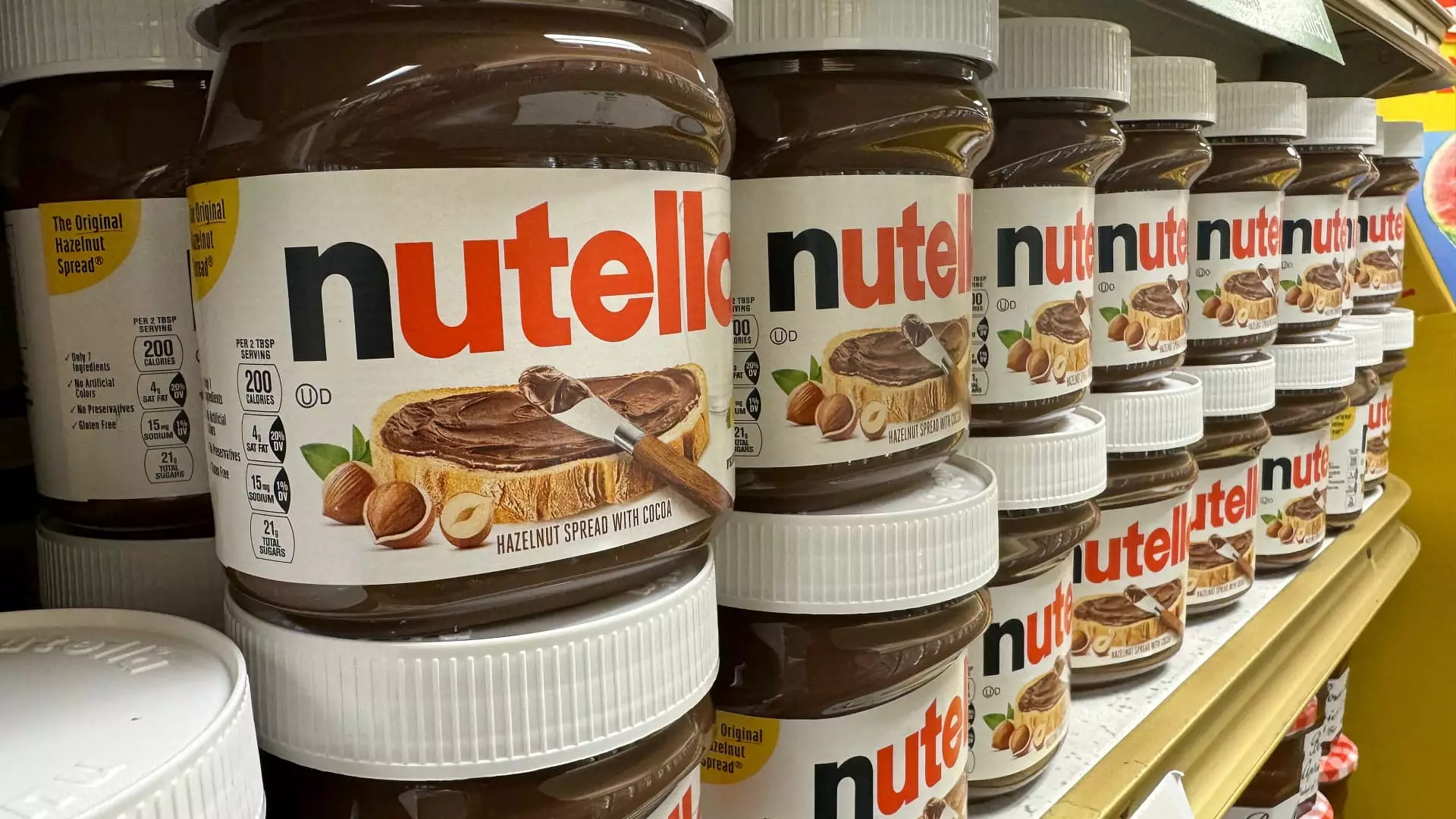Ferrero North America is taking a bold plunge into the world of confectionery by reimagining some of its staple products to cater more directly to the diverse tastes of American consumers. As the company prepares for the annual Sweets and Snacks Expo in Indianapolis, their efforts reflect a strategic shift towards customization and localized flavors. With a series of ambitious product launches, Ferrero is determined to secure its place among the top players in the U.S. candy market, currently dominated by giants like Hershey and Mars.
A Flavor Revolution: Peanut Nutella and Transforming Ferrero Rocher
Perhaps the most startling change is the introduction of Nutella Peanut, a reinterpretation of the beloved Italian chocolate-hazelnut spread that now incorporates roasted peanuts. This flavor innovation signifies not just a new product but an acknowledgment of American preferences, where peanut butter reigns supreme. Ferrero recognizes that to truly resonate with U.S. consumers, tweaking global favorites to include distinctly American flavors can forge deeper connections. The expected spring 2024 rollout speaks volumes about Ferrero’s confidence, as it targets not just U.S. enthusiasts but markets as far-flung as Southeast Asia and the Persian Gulf, where Nutella’s popularity burgeons.
Additionally, Ferrero Rocher is receiving a makeover that will transform its iconic spherical design into squares, now available in five different varieties, including caramel and assorted flavors. This transformation could be seen as a strategic gamble; the company’s decision to reinvent a classic aligns with broader trends where innovation can both capture consumer attention and sustain brand relevance. By blending familiar tastes with novel presentations, Ferrero tests the waters for potential new fan favorites while attempting to capture a larger market share within the highly competitive landscape.
Acquisitions: Strategically Strengthening the Portfolio
Ferrero’s recent acquisitions—including Fannie May, the parent company of Brach’s, and the U.S. candy business from Nestlé—highlight a tactical effort to consolidate its holdings and expand its brand portfolio. According to financial analysts, these strategic moves have positioned Ferrero as the third-largest candy manufacturer in the U.S. It’s a notable climb, yet the road ahead remains challenging. While sales growth has been observed, the sector’s giants like Hershey and Mars maintain a formidable lead in market share.
This rising competition suggests that despite Ferrero’s recent success, merely introducing new flavors and products may not suffice to unseat established brands. The company needs to find the right balance between innovation and brand loyalty. With each acquisition, Ferrero amplifies its marketing power, but it must also ensure that each brand maintains its unique voice amidst the larger company strategy.
Localization: A Move Toward Greater Adaptability
In light of rising tariffs and international trade complexities, Ferrero’s push to localize its supply chain is not just wise; it’s essential. The company is investing $75 million towards manufacturing Nutella Peanut in the U.S. and sourcing hazelnuts locally from Oregon. This strategic move not only alleviates some impact from international trade disputes but also resonates with a growing consumer preference for locally sourced products. The trend of “buying local” is gaining momentum, and Ferrero’s commitment could position it favorably with a demographic that values sustainability and transparency.
Moreover, the scale-up of Ferrero’s Illinois production plant reflects a robust commitment to meeting local demand, while simultaneously responding to the challenges of global supply dynamics. This dedication to establishing a more agile and self-reliant production process showcases Ferrero’s forward-thinking approach in an uncertain economic climate.
The Next Chapter: Marketing on a Grand Scale
Ferrero’s plans for significant marketing initiatives throughout major sporting events signal an understanding of contemporary consumer culture, where brand association with beloved events can catalyze loyalty and amplify visibility. The impending marketing push during high-profile events like the Super Bowl and World Cup suggests a readiness to leverage the connection between sports, celebration, and indulgence—elements that are often intertwined in American culture.
This strategic marketing maneuver could attract new consumers who may have previously overlooked Ferrero’s offerings, thus highlighting the importance of visibility in a saturated market. However, there lies a fine line between becoming a beloved household name and overextending oneself in a bid to capture attention.
As Ferrero embarks on this thrilling journey of innovation and rebranding, the stakes are undeniably high. With its recent transformations and targeted strategies, the company aims not only to thrive but to redefine its relationship with U.S. consumers. The real question remains—will these bold moves be enough to shift consumer preferences and spark a lasting love affair with Ferrero’s revamped selections?

